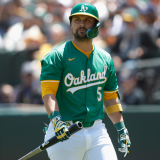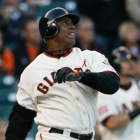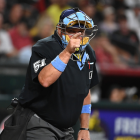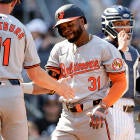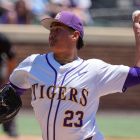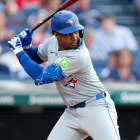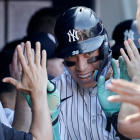
Pittsburgh Pirates rookie sensation Paul Skenes is scheduled to make his fourth start at the big-league level tonight against the Detroit Tigers as part of a doubleheader. (The Pirates and Tigers were rained out on Tuesday.) Skenes, who entered the season universally regarded as the best pitching prospect in the minors, has lived up to the hype through his first three starts by compiling a 2.25 ERA and a 21-to-4 strikeout-to-walk ratio across 16 innings pitched.
Many of the big mistakes made in baseball analysis arrive from reading too far into small samples. Still, we hope that you understand that we're being descriptive, not predictive, when we present where Skenes would rank in a few important categories if he had enough innings to qualify (do note that these numbers are as of last Thursday, following his most recent start):
- K%: 33.9% (1st)
- BB% 6.5% (t-26th)
- K-BB%: 27.4% (3rd)
- GB%: 64.7% (1st)
Take Tyler Glasnow's strikeout and walk rates and pair them with Max Fried's ground-ball rates and you have … well, Skenes. That's a brilliant combination, and it's no wonder that Skenes has been -- and should remain -- appointment viewing.
With that in mind, here are three other statistical tidbits worth knowing about Skenes through his first three starts.
1. Hardest thrower among starters
We may as well start with the obvious. Everyone knows that Skenes throws hard. Just how hard does he throw? Harder than any other starter in Major League Baseball.
Paul Skenes, 11th K.
— Rob Friedman (@PitchingNinja) May 17, 2024
100mph on his 100th Pitch. pic.twitter.com/84tpA5huyV
Through Thursday's start, Skenes' average four-seam fastball this season is 99.3 mph. Only three pitchers have thrown harder on average (min. 100 fastballs), and they're each full-time relievers: Oakland Athletics closer Mason Miller (100.9 mph), Arizona Diamondbacks rookie (and CBS Sports breakout pick) Justin Martínez (100.1 mph), and St. Louis Cardinals closer Ryan Helsley (99.4 mph). That's impressive company for a starter to keep, if you ask us.
Only one other starting pitcher (min. three games started) is within a mile per hour of Skenes' average fastball velocity: Los Angeles Angels righty José Soriano. Mind you, the average fastball velocity for starters this season is 93.4 mph. That leaves Skenes close to three standard deviations from the norm, according to TruMedia's calculations. The only other starting pitcher more than 2.5 deviations from the mean is Kyle Hendricks, the veteran righty for the Chicago Cubs who (to state the obvious) is on the other end of the spectrum.
2. Climbing triple-digit pitch leaderboard
Oh, you thought we had exhausted our velocity-related Skenes tidbits? Heavens no. The previous subheading concerned itself with a rate statistic -- Skenes' average fastball velocity; this one is all about a counting statistic, or how often Skenes has cleared the century mark. Specifically, we wanted to see where Skenes ranked among pitchers in the total number of 100-plus mph pitches.
Predictably, the answer speaks to Skenes' elite arm strength. That's because he already ranked in the top 10 despite appearing just thrice. Here are the numbers through Skenes' start on Thursday:
- Mason Miller, 148
- Michael Kopech, 87
- Justin Martínez, 79
- Camilo Doval, 56
- Emmanuel Clase, 52
- Ryan Helsley, 52
- José Soriano, 43
- Jhoan Duran, 34
- Paul Skenes, 33
- Hunter Greene, 28
You will notice two things: 1) Miller has really been running away with this category; and 2) Soriano is the only starting pitcher listed ahead of Skenes. (And, even then, Soriano's first two appearances this season came in a relief capacity.) Provided Skenes stays healthy and continues to average, say, 11 100-plus mph pitches per outing, he's going to scale this leaderboard in a hurry.
We don't want to repeat ourselves too often, but it bears mentioning one last time: Skenes has legitimately special arm strength for a starting pitcher.
3. Overlooked control
There's an old concept in baseball analytics circles called Nichols Law. It points out the flawed logic in how catchers who cannot hit are assumed to be defensive geniuses -- why else would a team bother rostering them? In theory, the version for hurlers would contrast hard-throwing pitchers and substandard control -- if you throw hard you must have errant location. Skenes would make for an excellent counterpoint.
Paul Skenes, Nasty 96mph Splinker. ✌️ pic.twitter.com/UOAzLJqPqU
— Rob Friedman (@PitchingNinja) May 23, 2024
TruMedia tracks what percentage of every pitcher's offerings are located within 18 inches of the center of the strike zone to form a "competitive location" metric. Generally, the pitchers who grade best in this measure do tend to be those who have to throw strikes to succeed. Much like those pitchers, you probably have a good idea of where this is going, so let's get to the point.
Here, as of Thursday afternoon, are the five starters with the highest share of competitive pitches:
- Joey Estes, 91.8%
- Bryan Woo, 91.7%
- Ty Blach, 91%
- Tyler Alexander, 90.5%
- Paul Skenes, 90.3%
You have one pitcher who throws harder than the average starter (Woo), one pitcher just below (Estes), two pitchers who clock in somewhere in the 80s, and then, in what seems like a cruel joke on opposing hitters, you have the aforementioned velocity king.
No wonder opponents are having a difficult time scoring runs against Skenes. No one else in the game combines his level of power with his kind of control.








